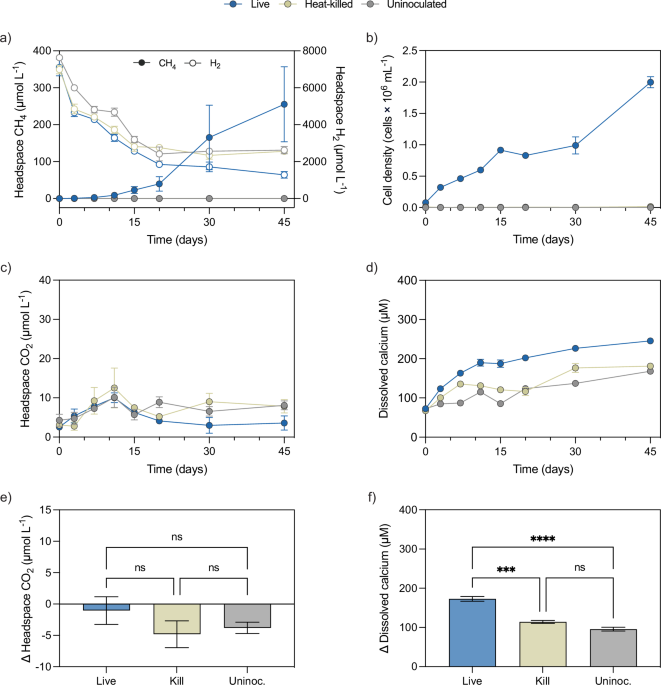Microbial Methanogenesis: Utilizing Carbonate Minerals for Inorganic Carbon Source
Key Ideas
- Methanogenic microbial communities can utilize calcium carbonate as an inorganic carbon source for methanogenesis under alkaline conditions.
- The presence of methanogens, particularly Methanobacterium sp., was confirmed in the enriched microbial community through metagenomics.
- Study results suggest that hydrogenotrophic methanogens impact carbon biogeochemistry and carbonate mineral stability by utilizing carbonates for methane production.
- Microorganisms play a significant role in altering local chemistry, affecting mineral nucleation, and potentially influencing carbonate dissolution.
The article explores the utilization of carbonate minerals as an inorganic carbon source for methanogenic microbial communities under alkaline conditions. The study demonstrated that calcium carbonate can serve as the sole source of inorganic carbon, leading to increased methane concentrations and mineral dissolution in the presence of a methanogen, Methanobacterium sp., and five bacterial community members. Genome-resolved metagenomics confirmed the metabolic potential for hydrogenotrophic methanogenesis. The research highlights the impact of hydrogenotrophic methanogens on carbon biogeochemistry and carbonate mineral stability, providing insights into environmental systems. Microbial activity, particularly hydrogenotrophic methanogenesis, may play a crucial role in influencing mineral dissolution and altering local chemistry, emphasizing the importance of understanding microbial contributions to carbon cycling and climate change mitigation strategies.
Topics
Production
Climate Change
Carbon Sequestration
Methanogenesis
Metagenomics
Microbial Communities
Carbonate Minerals
Carbon Biogeochemistry
Environmental Systems
Latest News
